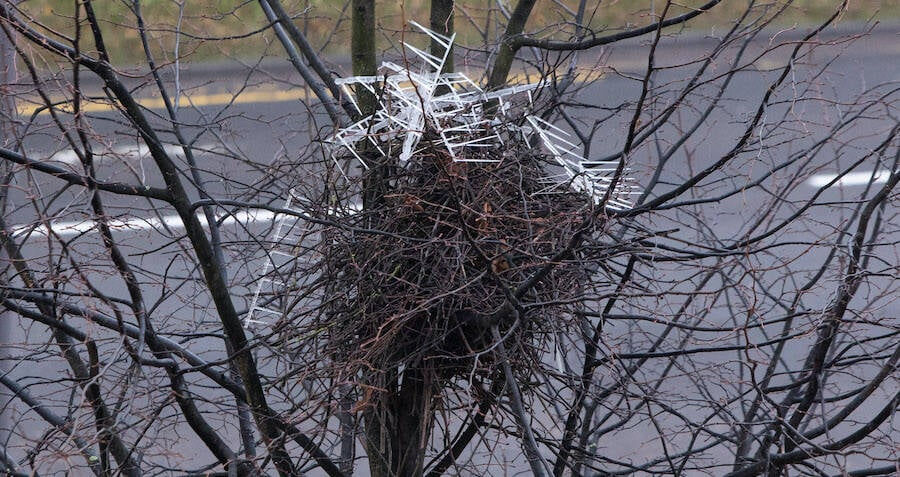By: Karen Zhu
Just when Auke-Florian Hiemstra, a doctoral student studying bird behavior at the Naturalis Biodiversity Center in the Netherlands thought he had seen enough after he had discovered bird nests containing windshield wipers, sunglasses, plastic carnations, condoms and envelopes used to package cocaine. But still, he was not prepared for what he found when he went to investigate a strange nest that had been spotted outside a hospital in Antwerp, Belgium, in July 2021.
Unbelievable
Nestled near the top of a sugar maple tree was a Eurasian magpie nest that resembled a cyberpunk porcupine, with thin metal rods sticking out in every direction. “I couldn’t believe my eyes,” Mr. Hiemstra recalled, “These are birds making a nest with anti-bird spikes.” Rows of these metal pins are used frequently in urban environments, installed on rooftops and ledges to discourage birds from perching or nesting on buildings. But outside the Antwerp hospital, where, as it happened, many of the rooftop spikes had gone missing — the magpies had managed to convert the hostile spikes that were meant to chase them away into a home.
Outsmarting Us
“They’re outsmarting us,” Mr. Hiemstra said. “We’re trying to get rid of birds, the birds are collecting our metal spikes and actually making more birds in these nests. I think it’s just a brilliant comeback.” Over the duration of the next two years, Mr. Hiemstra and his colleagues also found several other bird nests containing anti-bird spikes, made by either Eurasian magpies or carrion crow nests.
Rooting for Them
Unlike magpie nests, crow nests used the bird spikes differently. Crows turned the sharp pins toward the interior of the nest. The bird spikes are positioned into a flat shape where the pins facing inward provide a wider platform. Although this idea is still a hypothesis, Mr. Hiemstra has observed that positioning the spikes this way might provide the nests with more structural support. It is still unclear whether the birds are simply using the spikes because they are available — in the urban wild, they might be easier to come by than thorny branches — or whether they might be even better suited for the job than natural materials are.
Mr. Hiemstra suspects that there are more spike nests out there waiting to be found. He certainly hopes there are.“I’m definitely rooting for the birds, cheering for the birds and actually enjoying that the birds are fighting back a little bit,” he said. “Because they deserve a place in the city just like us.”











